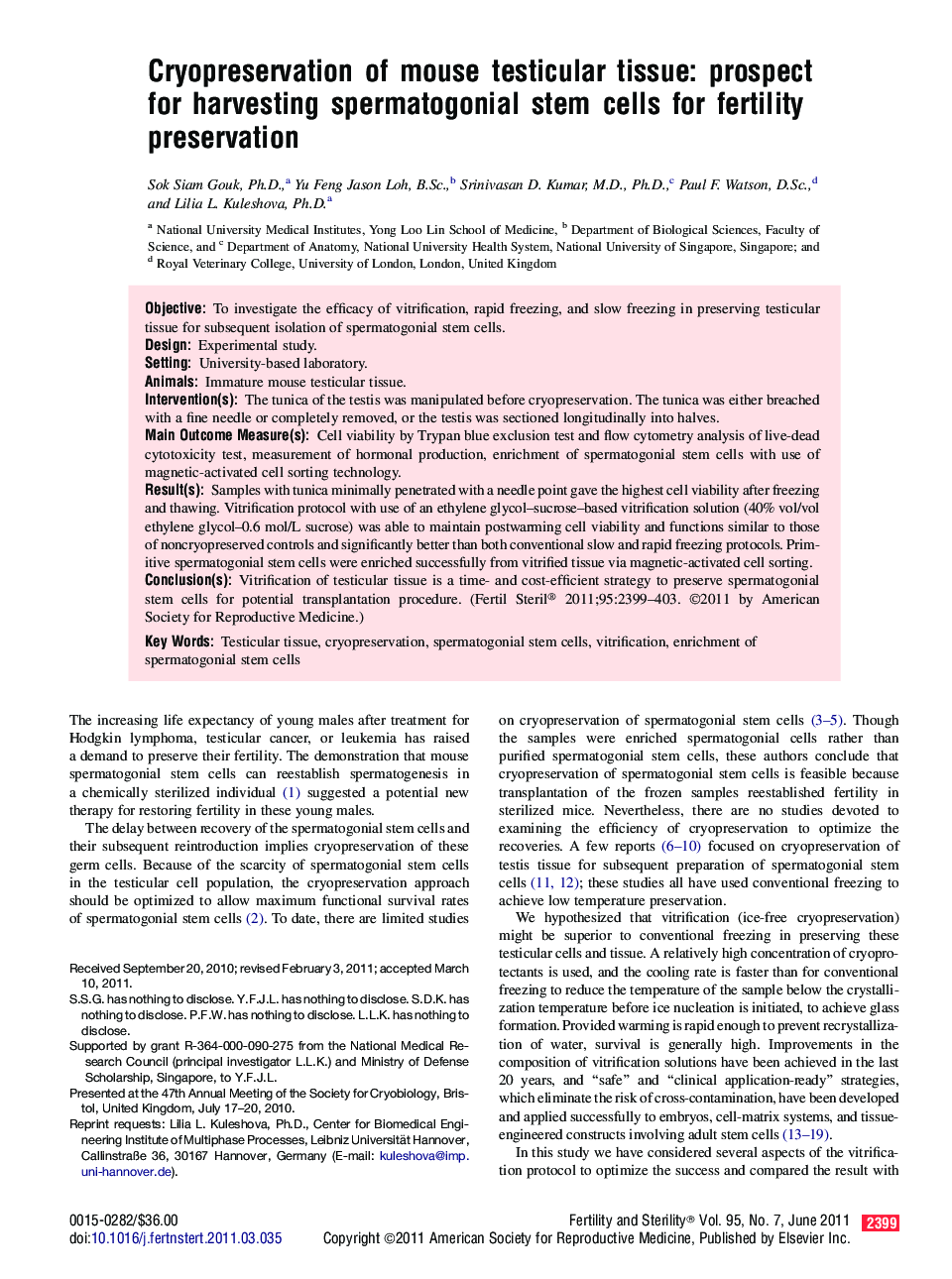| Article ID | Journal | Published Year | Pages | File Type |
|---|---|---|---|---|
| 3937790 | Fertility and Sterility | 2011 | 5 Pages |
ObjectiveTo investigate the efficacy of vitrification, rapid freezing, and slow freezing in preserving testicular tissue for subsequent isolation of spermatogonial stem cells.DesignExperimental study.SettingUniversity-based laboratory.AnimalsImmature mouse testicular tissue.Intervention(s)The tunica of the testis was manipulated before cryopreservation. The tunica was either breached with a fine needle or completely removed, or the testis was sectioned longitudinally into halves.Main Outcome Measure(s)Cell viability by Trypan blue exclusion test and flow cytometry analysis of live-dead cytotoxicity test, measurement of hormonal production, enrichment of spermatogonial stem cells with use of magnetic-activated cell sorting technology.Result(s)Samples with tunica minimally penetrated with a needle point gave the highest cell viability after freezing and thawing. Vitrification protocol with use of an ethylene glycol–sucrose–based vitrification solution (40% vol/vol ethylene glycol–0.6 mol/L sucrose) was able to maintain postwarming cell viability and functions similar to those of noncryopreserved controls and significantly better than both conventional slow and rapid freezing protocols. Primitive spermatogonial stem cells were enriched successfully from vitrified tissue via magnetic-activated cell sorting.Conclusion(s)Vitrification of testicular tissue is a time- and cost-efficient strategy to preserve spermatogonial stem cells for potential transplantation procedure.
